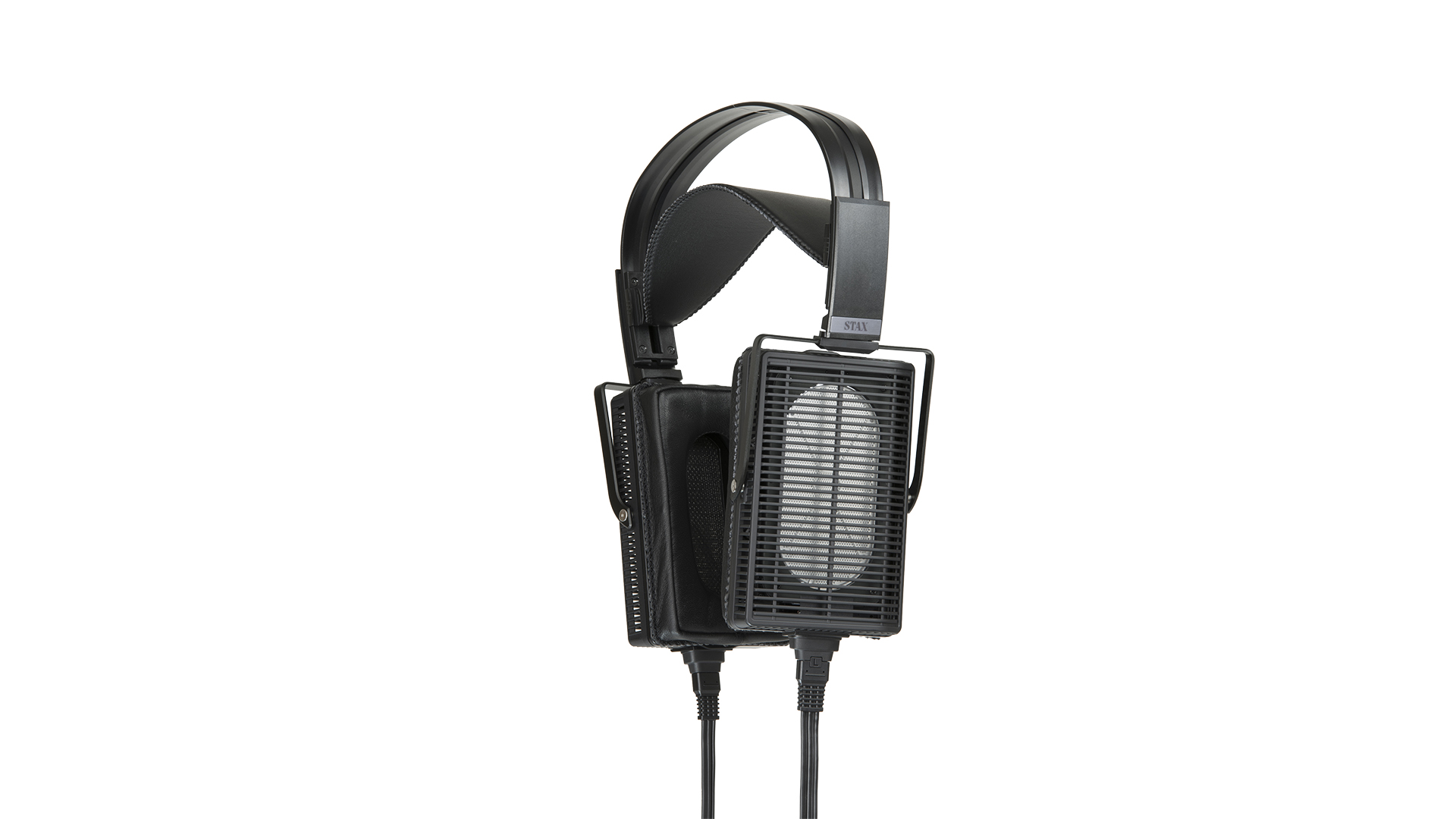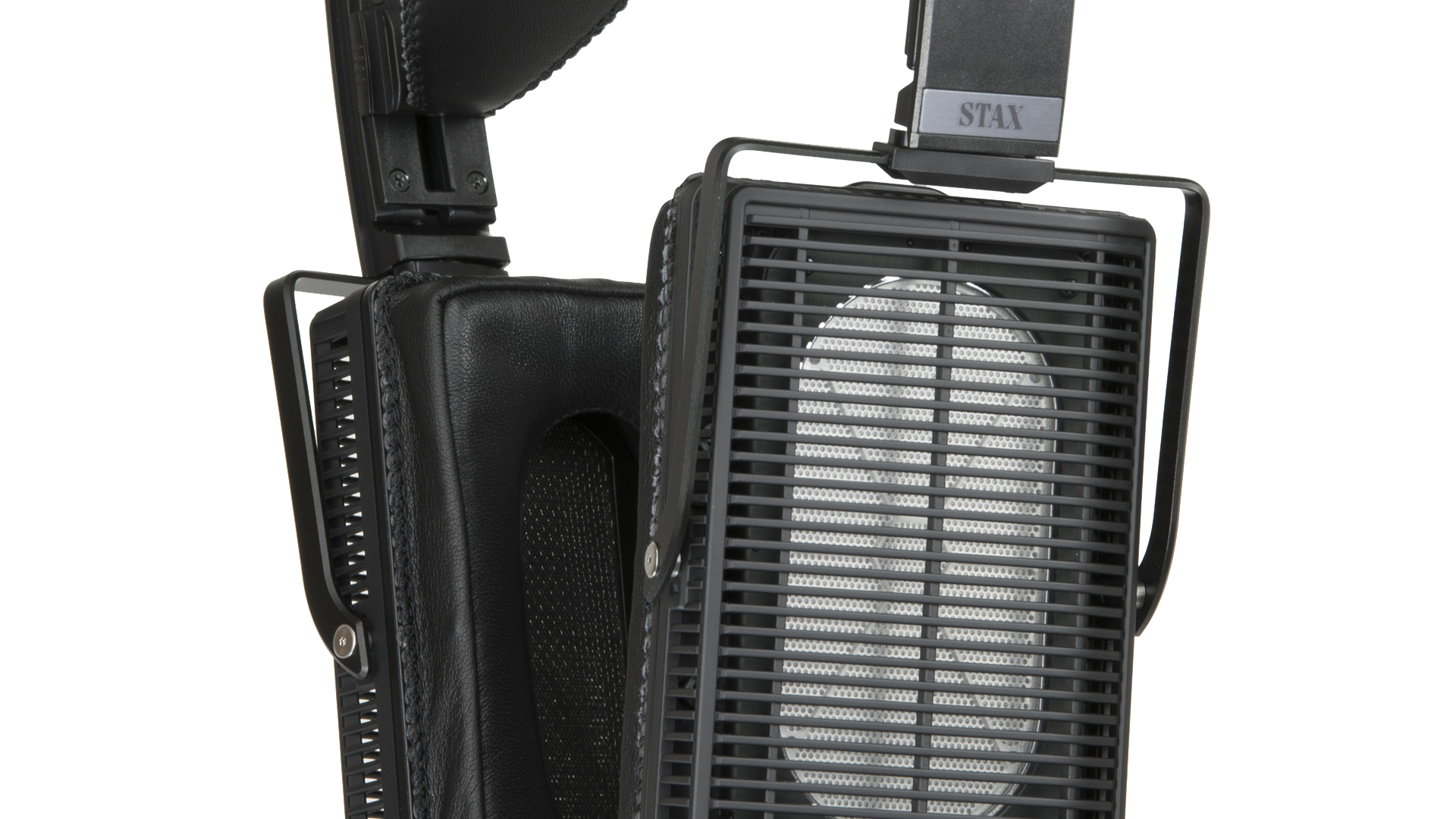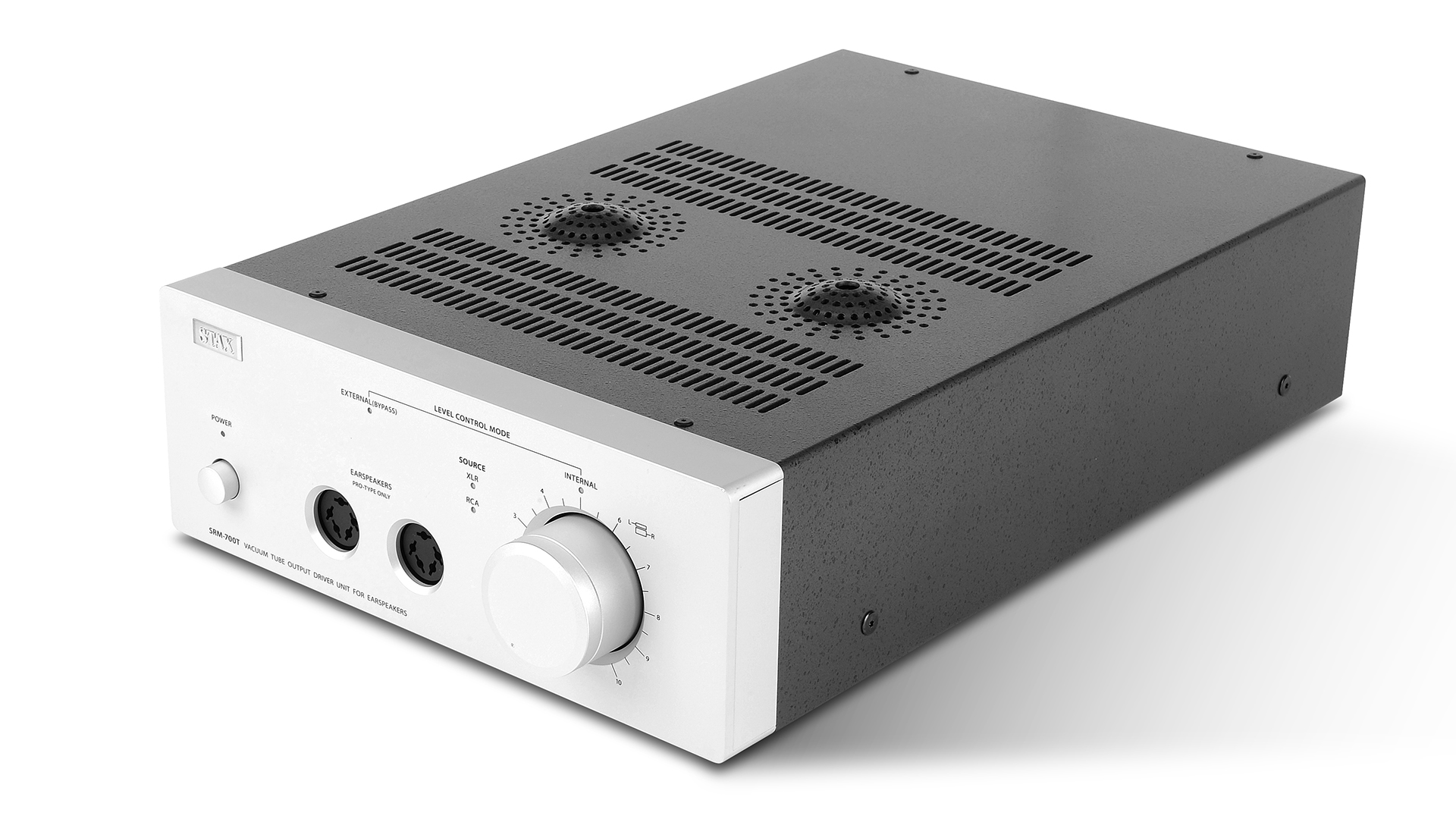What Hi-Fi? Verdict
If you’re looking for high-end headphones, this Stax pairing has to be heard. It’s astonishingly good in so many areas
Pros
- +
Breathtaking clarity
- +
Class-leading transparency
- +
Open, spacious presentation
Cons
- -
Sound lacks a bit of drama
Why you can trust What Hi-Fi?
Ask any seasoned audiophile about high-end headphones and it won’t be long before the name Stax is mentioned. The company launched the world’s first electrostatic headphones in 1960, laying the foundation for a richly deserved and glittering reputation that continues to this day.
We’re talking about headphone royalty here, and having spent some considerable time in the company of the SR-L700 Mk2/SRM-700T, we can understand why.
As you may have gathered from the name, there are two parts to this set-up: the SL-R700 Mk2 headphones and the partnering SRM-700T energiser that drives them. Stax makes a range of energisers, so there’s a choice of partner for any of its headphones. You can’t use a conventional headphone amplifier with electrostatic headphones, though, as the voltages required are far higher than usual.
Comfort

One look at these headphones will tell you they are strictly for domestic settings. Their design is simply too large and cumbersome for portable use, and the need for an energiser means that mains power is a must.
If you think the SR-L700 Mk2 headphones look old fashioned, we don’t blame you. To our eyes, there’s little difference between these and the original SR-Lamda model the company made back at the end of the 1970s.
These headphones aren’t discreet, they don’t blend in, and they make us look more like Doctor Who Cybermen than we’d care for – but they are wonderfully comfortable. At just over 370g, these Stax are pretty lightweight for high-end headphones. And those bluff-looking rectangular earpieces fit our ears well, having just the right amount of padding to make a good seal.
The open-backed design leaks sound like a sieve and provides no meaningful isolation from our surroundings, but it does prevent our ears from getting hot over longer listening sessions. And, let’s not forget, there’s the sonic advantage an open design brings.
The latest hi-fi, home cinema and tech news, reviews, buying advice and deals, direct to your inbox.
Build

Build quality is good, though it would be a stretch to call the SR-L700 Mk2 luxurious. They’re all about functional engineering, with materials chosen to do a specific job rather than to impress by their appearance or feel. Aside from the lovely soft leather on the headband and earpads, there’s more plastic used here than we would have expected. But it all seems fit for purpose and saves on weight over the metal alternative.

Stax SR-L700 Mk2
Weight 371g / 508g (including cable)
Frequency response 7Hz – 41kHz
Impedance 145k ohms
Cable length 2.5m
Stax SRM-700T
Frequency response DC – 100kHz
Input impedance 50k ohms (RCA)
Power consumption 54W
Dimensions (hwd) 10.3 x 24 x 39.3cm
Weight 5.7kg
The SRM-700T energiser sports a more conventional design than the headphones, but that doesn’t make it ordinary. It’s a nicely made box with an immaculately finished front panel and rather workmanlike casing, and all feels solid and built to last. Just note that the unit gets pretty warm over extended use, so you’ll need to put it somewhere with plenty of ventilation.
Stax makes two versions of this product. There's the one on test here, which has a hybrid circuit that uses a custom-made low noise dual FET on the input and a pair of 6SN7GTB valves in its output stage. And then there's its sibling, the identically priced SRM-700S, which substitutes the valves for JFETs in the output stage.
The SRM-700T has two inputs – balanced XLR or standard RCA, and a rotary dial on the back panel switches between the two. It would probably make more sense if this control were moved to the front, though.
There’s also a volume bypass if you want to integrate your headphone listening into the main stereo system, though that involves leaving the energiser in the signal path between the source and your main amplifier, even when the Stax aren’t being used.
You’ll find a pair of five-pin headphone outputs on the SRM-700T’s front panel and a split volume control that allows for channel balance. It’s all pretty straightforward and we’re up and running in minutes. The supplied headphone cable is 2.5m long and a flat and flexible design, but take care not to crease it.
There isn't a DAC inside the SRM-700T, so we add a Chord Hugo 2 into the signal path when listening to music on our MacBook Pro. The laptop is loaded with Audirvana music playing software and packed with hi-res files, as well as having Tidal access. We also use our reference Naim ND555/555 PS DR music streamer to hear what the Stax sounds like with a money-no-object source.
Sound

Either way, the results are staggering. This Stax pairing delivers one of the most detailed headphones performances we’ve ever heard. It sounds so clean and precise that we can take apart a complex recording like Radiohead’s In Rainbows without effort. Every note and sound is crisply defined and can be tracked with ease. If analysis is your thing, your search can stop right here – you’ve just found your Golden Fleece.
There’s an impressive degree of agility, matched with clarity that’s utterly convincing. Thom Yorke’s vocals come through with subtlety and texture. We can feel every word, as his passion flows on the sparse and haunting Videotape. The result is as natural and unforced as we’ve heard in a pair of headphones. And the scary thing? This headphone/energiser pairing isn’t even the best the company can do.
We switch to Stravinsky’s The Rite of Spring and are transported to the concert hall. As with all headphones, there’s no true stereo image – the vast majority of recordings are engineered to be heard with speakers placed in front of the listener, rather than on either side of the head – but we still enjoy a wonderfully open and spacious presentation. There’s an unusual sense of ease as the music becomes demanding, as though the Stax combo doesn’t even need to work hard to achieve such stellar results.
Dynamic shifts are rendered in a smooth and fluid manner and we’re struck by the pairing’s refinement. It's insightful enough to show every flaw in the recording but refuses to over-emphasise those shortcomings.

Tonally, the SR-L700 Mk2/SRM-700T combo is hugely convincing. While it doesn’t sound ruler flat, it does have a wonderful consistency from the lowest frequency upwards that sounds incredibly natural and authentic. Comparatively, just about every conventional dynamic driver equipped headphones we’ve heard comes across as unbalanced and lacking in transparency.
In our experience, no product is perfect – and that’s still the case here. For all its electrostatic brilliance, there are areas where the SR-L700 Mk2/SRM-700T pairing could do better.
While they set class-leading standards in detail resolution, clarity and articulation, they fall behind conventionally designed open-backed rivals, such as the Grado GS300e and Focal Utopia, when it comes to dynamic punch and rhythmic drive.
Music that should thrill, whether it’s Stravinsky or Radiohead’s 15 Step, tends to become something to dissect and study. For all its excellence, the final result is a little clinical. But, equally, if you want to hear every shred of information in a recording, we haven’t come across a better way to do it regardless of price.
Verdict
This Stax pairing is breathtaking in so many ways; an astonishing performer that stomps all over its rivals when it comes to naturalness and resolution.
The electrostatic technology that gives it so many advantages has certain weaknesses, and that allows conventional rivals to move ahead in other areas. But that can’t take away from the fact that, given a suitable recording, this Stax SR-L700 Mk2/SRM-700T combo can be little short of magical.
SCORES
- Sound 5
- Comfort 4
- Build 4
MORE:
Read our guide to the best audiophile headphones
Read our Focal Utopia with Chord Hugo 2 review
What Hi-Fi?, founded in 1976, is the world's leading independent guide to buying and owning hi-fi and home entertainment products. Our comprehensive tests help you buy the very best for your money, with our advice sections giving you step-by-step information on how to get even more from your music and movies. Everything is tested by our dedicated team of in-house reviewers in our custom-built test rooms in London, Reading and Bath. Our coveted five-star rating and Awards are recognised all over the world as the ultimate seal of approval, so you can buy with absolute confidence.

